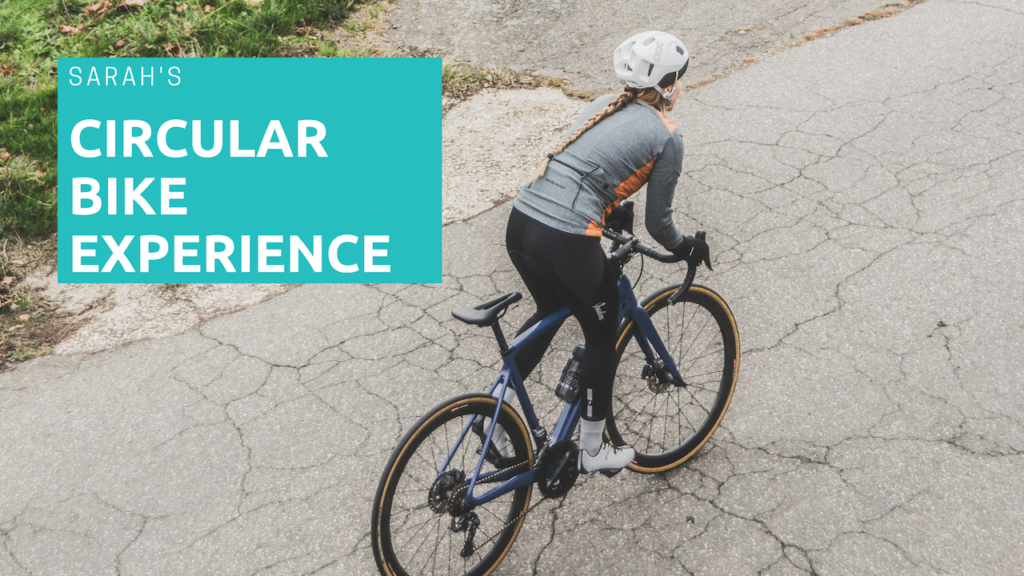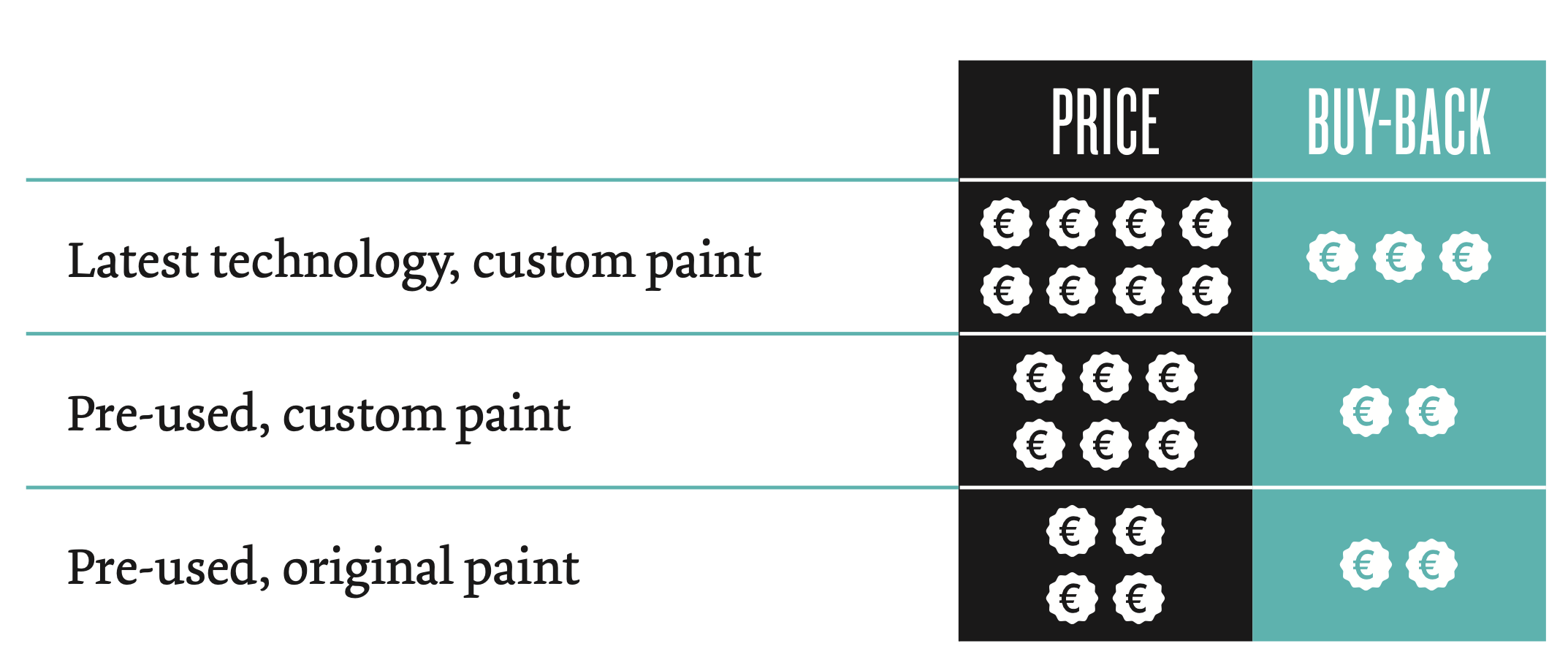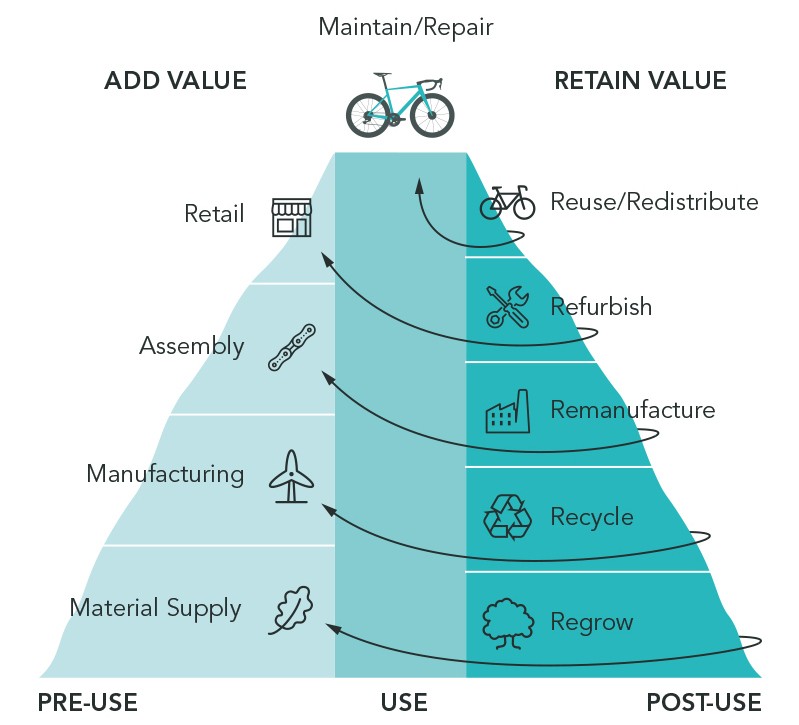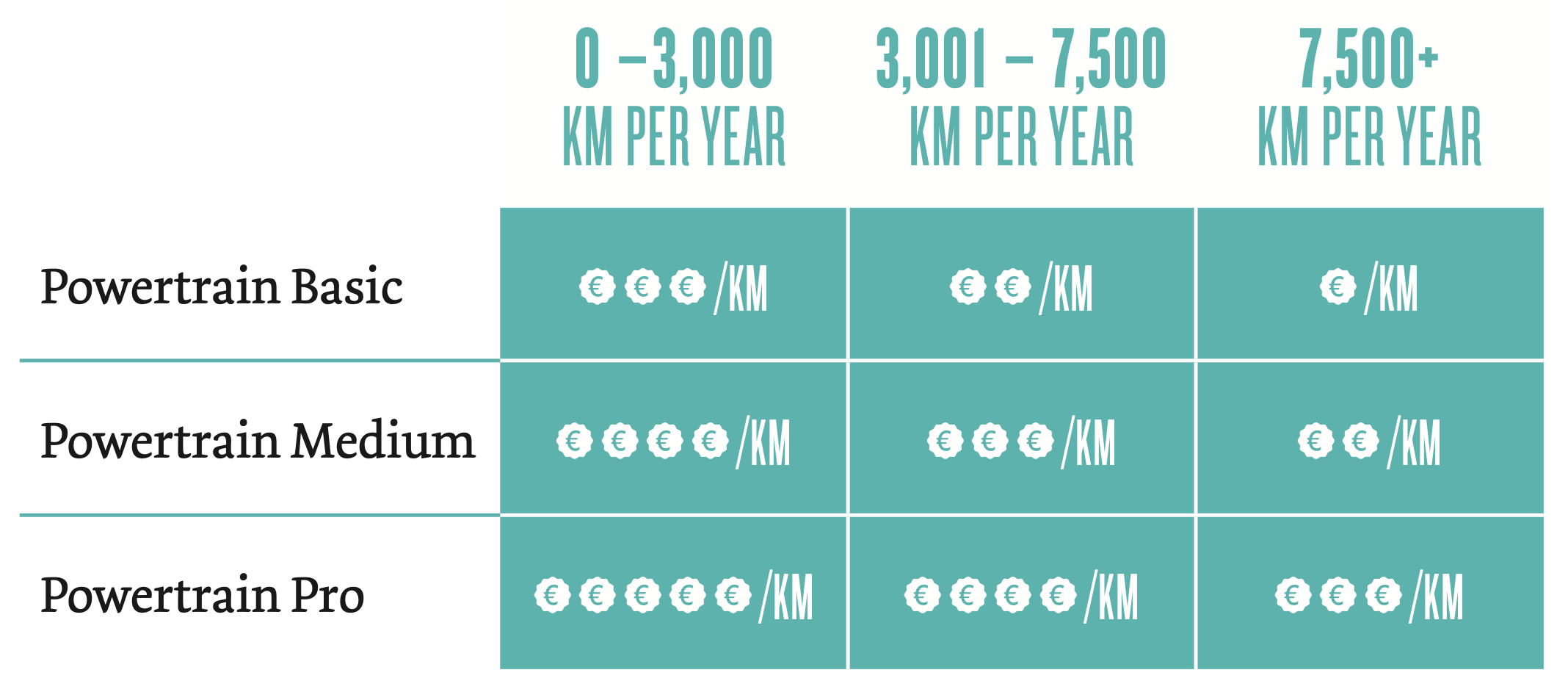- First published on Linkedin

Coen van den Broek on Unsplash
My favourite part of working with people on the circular economy in the cycling industry is telling stories of how awesome this world would be from a customer experience point of view. Forget sustainability, ESG and the circular economy. Think #business. Think #customer satisfaction. This is the second of 2 articles about how the #customer experience in the #cycling industry can change if we move from the existing, not very sustainable, linear cycling economy to a circular cycling economy.
The article is an extract from “From marginal gains to a circular revolution“. The first article can be found here.
Sarah’s circular bike experience
How the above works in the real world is described in a follow-up of Sarah’s story in the previous article, which ended just before she headed out for her trip across the Alps on her bike with rim brakes. The trip turned out to be amazing, with lots of hours spent on famous mountain passes in beautiful surroundings. Together with friends, or alone with her thoughts, she realised that she had made the right decision in refusing to buy a new bike, and instead, enjoying the lightweight bike she already owned. It had been sunny and dry all week, and since there was no need to race down the mountains, she did not miss the disc brakes. Riding in the mountains made Sarah realise once again how fragile the natural systems around her are, and that she too could do more to limit her impact on the environment.
Riding in the mountains made Sarah realise once again how fragile the natural systems around her are
A few years later – we are now in the near future – the inevitable happens. Sarah’s bike has reached the end of its technical lifetime. Even though she has done everything she could to maintain and repair her bike, too many parts need to be replaced at once. Because replacement parts are hard to find and expensive, it makes more sense to buy a new bike.
She goes to her local bike shop and is surprised by how she is treated. Instead of being overwhelmed by row upon row of similar looking bikes, half of them with a ‘Sale’ sign, she enters a shop with displays showing framesets, groupsets and wheelsets. The salesman asks her how he could help her. Sarah explains her experience, goals and wishes for her new bike.
The salesman explains the new approach to finding the right bike for every rider:
- Start with a bike fit to determine the right bike sizes suiting Sarah’s riding style, body measurements and flexibility.
- Select a Platform consisting of a frame, fork, seatpost, saddle, stem and handlebar, all in line with the results from the bike fit, and in a custom colour scheme if desired.
- Select a Powertrain bundle based on the estimated number of kilometres per year she will ride and the price she wants to pay. The Powertrain includes a groupset containing shifters, brakes, derailleurs, a chain, cranks including chainrings and a cassette, as well as various options for wheelsets and pedals.
- Select a Computer, which functions as a data hub with, as a minimum, an option to communicate with the sensors that are integrated in the Platform and the Powertrain to monitor the state of the bike and send this data to the manufacturers. Other options include traditional functions like integration with power meters, heart rate sensors and navigation.
- Select the Consumables, the fast-wearing and easy-to-replace parts. These include tyres and handlebar tape.
- Place the order and be patient for a few days for the delivery of her custom-made road bike.
Hand-pick the frame you like
The whole process sounds like the stories Sarah’s father told her about how he bought a road bike in the 1970s. The process of being able to hand-pick the frame you like, choose the colour, and select the parts and wheels is very exciting. The prospect of riding something personalised is really attractive.
Two important things are different from the situation in her father’s days. First, Sarah will not immediately have to spend the amount of money a bike cost in the past, as she will only buy the Platform and the Consumables. The Powertrain and Computer will remain property of the manufacturer; she will be charged an amount every month, according to the bundle Sarah chose based on her expected annual kilometres. It reminds Sarah of ordering a new mobile phone, which also comes with several options of devices and price plans.
The latest technology is cool – with a negative carbon footprint or guaranteed recycled materials.
Second, Sarah has the choice between a Platform with the latest technology and pre-used options. The latest technology is cool – the Platforms offered by various brands are all made from new types of biobased fibre composites, with a negative carbon footprint or guaranteed recycled materials.

All have performance levels better than anything she has ever seen before. The pre-used Platforms are from older high-end Platform generations that have been completely checked and either repainted by the manufacturer or did not even require new paint because they had only a few scratches. Both the new and the pre-used Platforms come with a lifetime guarantee, even if Sarah were to crash or otherwise damage the Platform.

Figure 1: The circular cycling Value Hill shows how materials will be used, and reused for ever.
The Powertrain
All of the Powertrain options are a mix of new, reused and refurbished parts, but only on close inspection Sarah finds some signs that a few parts have been used before. The performance of the Powertrain is guaranteed by the manufacturer, and replacement parts and repairs are included in the monthly fee.

Sarah decides to buy a pre-used Platform with a custom paint of her choice, combining this with a medium-level Powertrain on a 3,000- 7,500 km/year bundle. The Platform and the Powertrain brands all offer upgrades, such as a new paintjob for the frame and fork after a few years, and a rental option for a lightweight mountain-specific wheelset for a short duration.
Ordering the bike
The ordering process is simple, and the Platform, Powertrain, Computer and Consumables will be delivered to the shop within 48 hours. The shop will then assemble the bike and make sure that the saddle position matches the bike fit. Sarah pays for the bike fit, Platform and the Consumables in the shop, and signs a contract with the Powertrain and Computer suppliers, who will collect the fee from her bank account on a monthly direct debit. The Platform comes with a guaranteed buy-back price if Sarah wants to change her Platform, so that the Platform manufacturer is able to reuse it. The Powertrain and Computer need to be returned to the manufacturer for reuse at the end of the contract, unless Sarah decides to extend the contract.
A number of sensors in the bike monitor the wear of parts and are able to detect defects that might lead to failure.
New bike day!
A few days later, Sarah picks up the bike. The salesman explains how a bike passport, which can be viewed by scanning the QR code on the frame with her mobile phone, contains all the relevant information related to her bike. A number of sensors in the bike monitor the wear of parts and are able to detect defects that might lead to failure. The data is shared with the Powertrain manufacturer, and Sarah will get instructions on when and how to maintain her bike to make sure it works best. If the sensors detect that certain parts need to be replaced, the passport will send an automated message to the app on her phone, allowing her to book a timeslot at the bike shop, which will receive the required spare part automatically and on time.
Sarah is a happy customer.
Her new bike fits better than her old bike, the bike rides amazing, and the custom colour is exactly how Sarah wants it. At the next group ride with her mates, everyone is impressed by the custom paint scheme Sarah selected, and jealous of the low investment in combination with the low-risk monthly subscription for the Powertrain. The environmental benefits of the concept are clear to everyone, and this ignites a conversation about how other industries should follow the example of the cycling industry.
Want to learn more?
Get in touch for a workshop or coaching, and get a copy of From Marginal Gains to a Circular Revolution. Available in EU via www.circularcycling.nl, UK via www.rouleur.cc and worldwide on Amazon.

